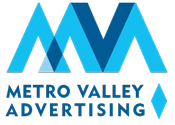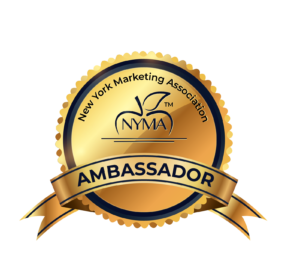If you’re a personal injury attorney, you rely on a steady stream of leads. Without it, your intake stalls. When that happens, the first instinct is often to blame the message. But the real issue may be how and where you’re spending your media dollars. You need to look for media buying mistakes that kill lead flow.
Personal injury advertising isn’t just about getting noticed. It’s about getting results. And that starts with buying the right media in the right way. But when ad buys are rushed or poorly managed, they quietly drain your wallet and kill your lead flow.
Let’s walk through common mistakes that hold back personal injury marketing. Each one affects your ability to reach, engage, and convert the right people. Fixing them can help you get more out of your media spend—and fast.
Inadequate Target Market Research
You can’t reach the right people if you don’t know who they are. Many personal injury campaigns fail because they rely on generic targeting. For example, you might run radio spots across a broad region when your best clients live in just a few zip codes or a particular city.
Good personal injury marketing starts with specific research. What are the demographics of your highest-value clients? Are they commuters? Seniors? Spanish-speaking? Do they respond better to daytime TV or mobile ads during rush hour?
Segment your audience and match the message to their behavior. Local accident data, traffic flow, and search intent tools can help. Without this step, your personal injury advertising risks speaking to everyone—and connecting with no one.
Neglecting the Lead Funnel Stages
Lead generation advertising is a process. It starts with awareness, moves to engagement and finishes at a conversion. Yet many ad strategies focus only on one part—often the top.
That’s a mistake.
Awareness ads (like banners or outdoor) get attention. But they need to be followed by engagement tools (like native or video) and conversion-focused platforms (like search ads or direct-response TV).
If you skip a step, you bleed prospects. You might get noticed but not called. Or clicked but not contacted. Great lead generation happens when you map your media to each funnel stage—and stay consistent across all three.
Ignoring Seasonality in Media Planning
Personal injury cases often follow seasonal trends. Slip and falls increase in winter. Car crashes spike in the summer and during holidays. Similarly some media also has busy and slow seasons, when rates fluctuate.
If your media plan doesn’t reflect this, you’re leaving leads on the table.
Some firms spend heavily in Q1, only to pull back mid-year when rates drop and volume rises. Others forget to plan for slow months and lose momentum.
To fix this, match your ad spend to high-need times. Examine media pricing regularly to find opportunities. Use past case data, adjust your mix by season, and build in flexibility. This is how personal injury marketing stays one step ahead.
Adopting a “Set It and Forget It” Approach
It’s easy to launch a campaign and assume it’s working. But without regular reviews, small problems grow. Lead generation dips. Costs creep up. Your intake flattens.
This is especially true in digital, where performance shifts quickly. And it also happens in traditional platforms, like radio or TV, where audiences age, formats change and seasonal usage fluctuates.
Build a routine of checking your data. At least monthly. Look for drops in impressions, high-cost clicks, or weak station performance. Keep testing offers and creative. Campaigns that are watched closely always deliver better results.
Overlooking the Importance of Media Mix Diversification
Relying on just one platform is risky. Yet too many firms go “all in” on TV or Google.
That works—until it doesn’t.
Algorithms change. Competition increases. Costs rise. When all your personal injury advertising is in one place, your lead generation becomes fragile.
A smart media mix spreads the risk. Combine digital and traditional. Pair high-frequency TV with local streaming. Mix paid search with paid social. Diversify based on what part of the funnel each channel supports. Remember, people have media preferences. Using a smart media mix broadens the reach of your advertising increasing the likelihood of success.
Misaligning Media Buys with Strategic Objectives
Not every media opportunity fits your goals. Just because a station has a low rate doesn’t mean it’s right. You need a strategy behind every dollar spent.
Start with your objective. What do you want the prospect to do? Consider your target audience. Establish a budget. Then put together a strategy that builds awareness, creates engagement and drives web leads.
Once that’s clear, make sure your media aligns. If you want more signed cases, focus on platforms that support conversions. If you’re opening a new office, awareness buys may be the priority.
Don’t buy media because it’s available or trendy. Buy it because it fits your plan.
Failing to Allocate Budget for Continuous Presence
Many attorneys spend big in bursts. Then they go dark. That’s a problem.
When you stop advertising, people stop seeing you. Awareness drops. Competitors step in. And your intake slows.
Your brand needs to be present year-round—even during slow seasons. That doesn’t mean spending the same every month. It means planning for a baseline presence with strategic increases during peak times.
A steady media presence supports long-term lead generation. And it helps reduce peaks and valleys in your caseload.
Disregarding Data-Driven Decision Making
Personal injury marketing should be measured. Yet many firms still make decisions based on instinct—or what worked last year.
That’s dangerous.
Media costs are rising. Competition is tighter. Without data, you don’t know what’s working—or what’s not.
Track performance by platform, creative, and region. Use clear KPIs: cost per lead, signed case rate, and conversion percentage. Review them monthly. Then adjust.
Strong lead generation depends on smart media buying. And that only happens when decisions are backed by data.
Underestimating the Value of Creative Consistency
Media buying gets you in front of people. But what they see and hear matters just as much.
If your creative is scattered—different messages, inconsistent tone, off-brand visuals—it weakens your impact.
Every ad should reinforce your brand and value. Use the same voice, tone, and offer across platforms. Whether it’s a billboard, a radio spot, or a Google ad, make sure it sounds like you.
Creative consistency helps build trust. And trust leads to action.
Not Leveraging Retargeting Opportunities
Most people won’t call you the first time they see your ad. That’s why retargeting is essential.
Yet many firms skip it.
If someone visits your site but doesn’t call, you should follow up with more ads. If someone watches your video, keep your brand in front of them with view to completion retargeting. Examine retargeting data and determine the optimal frequency of retargeting.
Retargeting turns interest into action. It increases conversion rates and shortens the time to contact. Make it part of your personal injury advertising plan—across both digital and connected TV platforms.
Conclusion – Media Buying Mistakes That Kill Lead Flow
If your intake is flat, the problem may not be your message—it may be your media strategy. Media buying mistakes that kill lead flow are easy to make.
Missteps in personal injury advertising, whether on TV, radio, or digital, often go unnoticed until results drop. But when you fix the foundation, lead generation improves.
Review your media mix. Tighten your targeting. Track your performance. And never stop testing. Personal injury marketing is too competitive to waste money on ad buys that don’t deliver.
Buy smarter. Plan better. And watch your leads start flowing again.



